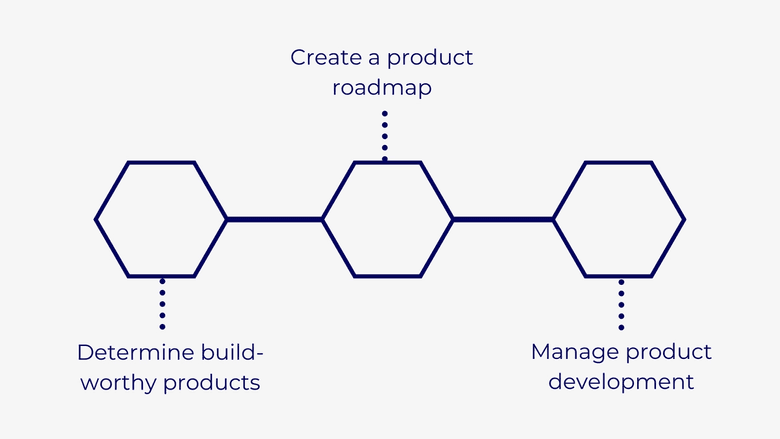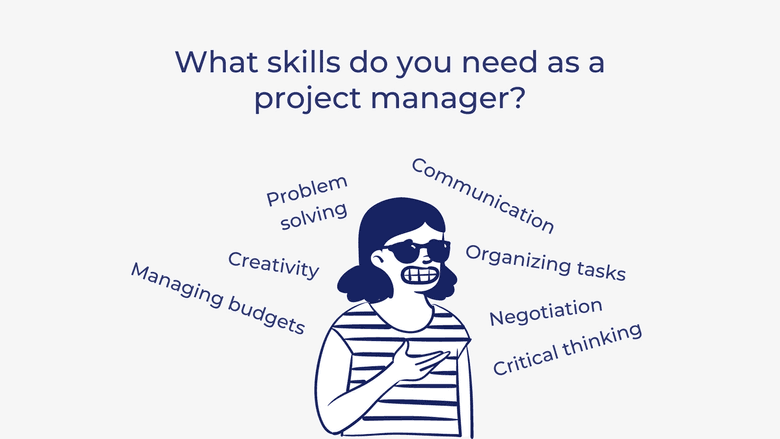Product Manager vs Project Manager: What's the Difference?
These two career paths aren't as similar as they seem. Which one is right for you?
The tech industry is constantly evolving. With new, head-scratching job titles like “technical evangelist” or “innovation sherpa,” it’s easy to understand why product management and project management are often confused. In a nutshell, a product manager sets the vision for a new product by determining what needs to be built, who will build it and how. A project manager acts upon this vision and ensures the project is executed within budget and time constraints.
Product managers are hired for their domain expertise; they understand the inner workings of a specific industry or niche market (for example, digital health coaches for patients with Parkinson’s disease rather than the broad category of “wearable technologies”). On the other hand, project managers are sought for their ability to keep projects running smoothly, motivate team members and manage roadblocks.
While some overlap exists between the two job descriptions (product managers are also expected to keep teams motivated and provide mentorship and guidance), product managers and project managers might find themselves working closely together. Large tech companies often have both, while a startup may only hire one role or the other, depending on the complexity of the project.
Here’s a look at both roles and the key differences in background, skill set, and day-to day responsibilities required for each. Which one is a better fit for your next career move?
What Does a Product Manager Do?

The product manager role is highly strategic. Their job is to oversee the entire product lifecycle. This includes...
- Understanding user needs and business requirements
- Determining what products or product features are worth building, then developing a product vision
- Creating a product roadmap (i.e. milestones, timeframe, etc) and budget
- Managing all aspects of the product development process and post-production through to the end of the product’s life cycle
At companies like Amazon, which are declaratively customer-centric, product managers serve as internal user advocates, making sure every product and feature puts the customers' needs first -- not the business’s stakeholders.
They are constantly analyzing the market and competitive conditions, shipping new features to beat out rivals and intuiting unmet user needs. After a product launches, they monitor key metrics like sales, user adoption, retention and other success metrics.
Great product managers create products with strong user adoption that show exponential revenue growth -- and perhaps even disrupt an industry.
👉 What's it like to be a PM at one of the world's largest financial institutions? Find out here.
Day-to-day responsibilities include:
- Customer interviews, user testing, and other forms of market research
- Running design sprints
- Feature prioritization and roadmap planning
- Performing market analysis or competitor analysis
- Gathering business requirements and translating them into technical requirements for engineering teams
- Pricing and revenue modeling
Product managers work closely with designers, developers, QA engineers, project managers and sales representatives. Unofficially, they’re tasked with keeping the peace between these different teams and reconciling competing demands from customers and executive leadership. Particularly in SaaS companies, product managers drive engineering teams. They know best what customers need and engineering is there to serve.
How do I become a product manager?

Unlike project management, there is no formalized education background or career path required for product management. In fact, many product managers are hired internally after transferring from a tangential role, such as customer success or software development. One way to get noticed for a product management role is to:
- Do an outstanding job in your current role; and
- Find a way to incorporate PM-related responsibilities into your work.
For example, say you spend most of your time responding to customer support tickets and you notice a recurring complaint about the user interface for the company’s mobile app. Alert the product team and propose a solution (and even a product strategy) based on what you’ve learned from your interactions with customers.
A product manager’s most crucial skill is relationship management. Despite the “manager” title, this position has no direct reports, so a product manager has little to no formal authority over the teams they work with. Thus, projects run on good faith cooperation between product managers and the other teams. If you command trust and respect from your coworkers, you’ll be more likely to coax a time-strapped engineer to squeeze in a quick bug fix or give advice to a UX designer who’s working on a hi-fidelity prototype.
👉 Learn about the best certifications for PMs here
Other skills for a successful product manager
- Customer empathy: The ability to identify customer pain points and know which ones to put resources behind. Customer satisfaction is a top priority
- Domain expertise: Knowing a certain industry, market or product inside out
- Technical expertise: Most product managers do not need to know how to code, but if they work for a SaaS company, they need to understand the technology enough to collaborate with developers and translate technical jargon into layman’s terms
- A focus on metrics: Product managers are constantly evaluating project outcomes against success metrics
What is a typical salary for a product manager?
Product managers earn an average of $108,992 in the US, according to Glassdoor.
What Does a Project Manager Do?

Project managers help the doers and idea generators get things done by overseeing complex projects from inception to completion. They’re adept at distilling ideas from design sprints and meetings and turning them into actionable next steps. Companies hire project managers to ensure that projects are completed on time and within budget constraints to maximize efficiency and revenue.
Day-to-day responsibilities include:
- Creating executable project plans
- Organizing project tasks -- figuring out what needs to be done, how it should be done, and who should do it
- Assembling the project team (eg: hiring contractors, selecting internal employees)
- Managing project budget -- controlling costs and managing how money is spent
- Coordinating work done by different people
- Making sure the project delivers expected outcomes
While a project manager’s exact duties depend on the industry, company and types of projects they oversee, all project managers oversee the project life cycle, which consists of four processes:
1) Initiation
What it means: Determine the business problem, the goals of the project and what resources are needed to support the project.
Deliverables/outcomes: Statement of Work (SOW), present the business case, create a business contract (if applicable)
2) Planning
What it means: Once management has greenlighted the project, the project manager creates a more formal set of plans to determine the project vision and mission, success criteria/measurable objectives and a description of project requirements.
Deliverables/outcomes: Create project budget and task list, begin allocating tasks to certain teams
3) Execution
What it means: Work begins on the actual project. Project managers continually measure performance to ensure the project is successful, providing support to teams and managing any roadblocks that arise.
Deliverables/outcomes: Deliver an MVP or finished product that meets project specifications and user requirements
4) Closing
What it means: Ensure the project completion criteria have been met and that project deliverables have been distributed or transferred to the intended users
How do I become a project manager?

Some project managers hold formal PM certifications; others are self-taught professionals who are adept at simplifying complex processes and keeping others in check. The traditional route to a PM career involves obtaining a certification from the Project Management Institute as a Certified Associate in Project Management (CAPM) or Project Management Professional (PMP).
CAPM certification is available to those without any project management experience if you have at least 1,500 hours of work experience plus a high school diploma or associate’s degree. Meanwhile, the PMP requires at least 4,500 hours of project management experience and a four-year degree. Those with minimal experience could pursue the CAPM first and work as a project manager until they qualify to sit for the PMP exam.
Formal credentials aren’t your only option. Consider the key project management knowledge areas (cost management/time management/resource management) and what experience you might have with each. Perhaps you oversaw a small advertising budget during your time as a social media manager, or you supervised a team of developers who adhered to tight deadlines. Gather metrics to illustrate the outcomes of your input and come up with examples from your professional life that show your project management skills in play.
Other skills for a successful project manager
- Communication skills: Ability to clearly communicate project scope, vision, etc; bring together people from diverse professional backgrounds
- Problem solving and critical thinking: Overcome roadblocks creatively; think on their feet and remain agile throughout the project
- Negotiation: Navigate demands from various stakeholders while keeping the project on track
What is a typical salary for a project manager?
Project managers earn an average of $66,137 in the US, according to Glassdoor.
The information provided herein is for general informational purposes only and is not intended to provide tax, legal, or investment advice and should not be construed as an offer to sell, a solicitation of an offer to buy, or a recommendation of any security by Candor, its employees and affiliates, or any third-party. Any expressions of opinion or assumptions are for illustrative purposes only and are subject to change without notice. Past performance is not a guarantee of future results and the opinions presented herein should not be viewed as an indicator of future performance. Investing in securities involves risk. Loss of principal is possible.
Third-party data has been obtained from sources we believe to be reliable; however, its accuracy, completeness, or reliability cannot be guaranteed. Candor does not receive compensation to promote or discuss any particular Company; however, Candor, its employees and affiliates, and/or its clients may hold positions in securities of the Companies discussed.
